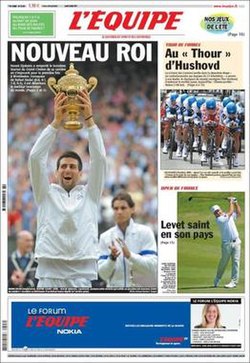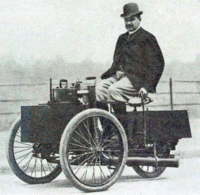
The Tour de France is an annual men's multiple-stage bicycle race held primarily in France. It is the oldest and most prestigious of the three Grand Tours, which include the Giro d'Italia and the Vuelta a España.

The general classification of the Tour de France is the most important classification of the race and determines the winner of the race. Since 1919, the leader of the general classification has worn the yellow jersey.
Éditions Philippe Amaury (EPA), also known as Groupe EPA or the Groupe Amaury, is a French private media group founded by Philippe Amaury (1940–2006) whose widow, Marie-Odile Amaury, owns a majority of the company. The CEO of the company is Aurore Amaury, daughter of Philippe and Marie-Odile Amaury.

The 1903 Tour de France was the first cycling race set up and sponsored by the newspaper L'Auto, ancestor of the current daily, L'Équipe. It ran from 1 to 19 July in six stages over 2,428 km (1,509 mi), and was won by Maurice Garin.

Marquis Jules Félix Philippe Albert de Dion de Wandonne was a French pioneer of the automobile industry. He invented a steam-powered car and used it to win the world's first auto race, but his vehicle was adjudged to be against the rules. He was a co-founder of De Dion-Bouton, the world's largest automobile manufacturer for a time, as well as the French sports newspaper L'Équipe.

Henri Desgrange was a French bicycle racer and sports journalist. He set twelve world track cycling records, including the hour record of 35.325 kilometres (21.950 mi) on 11 May 1893. He was the first organiser of the Tour de France.
The Amaury Sport Organisation is a private company, founded in 1992, that is part of the privately-owned French media group Éditions Philippe Amaury (EPA). ASO organises the Tour de France and other cycling races, as well as golf, running, sailing and off-road motorsport events over 250 days of competition per year, with 90 events in 30 countries. The president of ASO is Jean-Etienne Amaury, the son of Philippe Amaury and Marie-Odile Amaury, and grandson of EPA founder, Émilien Amaury.

The 1905 Tour de France was the third edition of the Tour de France, held from 9 to 30 July, organised by the newspaper L'Auto. Following the disqualifications after the 1904 Tour de France, there were changes in the rules, the most important one being the general classification not made by time but by points. The race saw the introduction of mountains in the Tour de France, and René Pottier excelled in the first mountain, although he could not finish the race. Due in part to some of the rule changes, the 1905 Tour de France had less cheating and sabotage than in previous years, though they were not eliminated. It was won by Louis Trousselier, who also won four of the eleven stages.
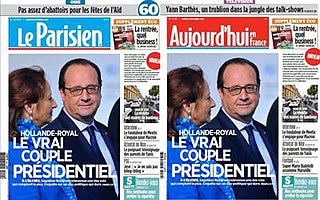
Le Parisien is a French daily newspaper covering both international and national news, and local news of Paris and its suburbs. Since 2015, Le Parisien has been owned by LVMH Moët Hennessy Louis Vuitton SE, better known as LVMH, belonging to French billionaire Bernard Arnault.
Philippe Amaury was a French media tycoon, and the son of publisher Émilien Amaury.

The 1919 Tour de France was the 13th edition, taking place from 29 June to 27 July covering a total distance of 5,560 kilometres (3,450 mi). It was the first Tour de France after World War I, and was won by Firmin Lambot. Following the tenth stage, the yellow jersey, given to the leader of the general classification, was introduced, and first worn by Eugène Christophe.
Géo Lefèvre (1877–1961) was a French sports journalist and the originator of the idea for the Tour de France.

Jacques Goddet was a French sports journalist and director of the Tour de France road cycling race from 1936 to 1986.

Félix Lévitan, was a sports journalist and the third organiser of the Tour de France a role he shared for much of the time with Jacques Goddet. Lévitan is credited with looking after the financial side of the Tour while Goddet concentrated on the sporting aspect, but in the end Lévitan was fired while Goddet simply retired.
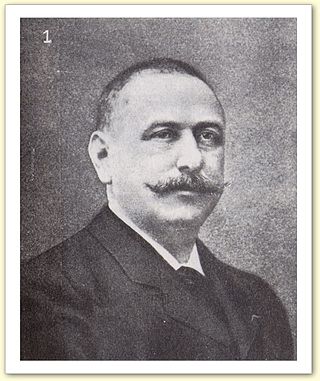
Pierre Giffard was a French journalist, a pioneer of modern political reporting, a newspaper publisher and a prolific sports organiser. In 1892, he was appointed Chevalier (Knight) of the Légion d'Honneur and in 1900 he was appointed an Officier (Officer) of the Légion d'Honneur.
The Tour de France was not held because of World War II because the organisers refused German requests. Although a 1940 Tour de France had been announced earlier, the outbreak of the war made it impossible for it to be held. After that, some attempts were made by the Germans during the war to have a Tour de France to maintain the sense of normality, but l'Auto, the organising newspaper, refused. Some other races were run as a replacement.
Albert Baker d'Isy was a French cycling journalist and author and the founder of the Grand Prix des Nations international time-trial. He is considered, in the French expression, "one of the most beautiful pens" of sports writing. Pierre Chany a contemporary, called him "The best sporting journalist of his generation."
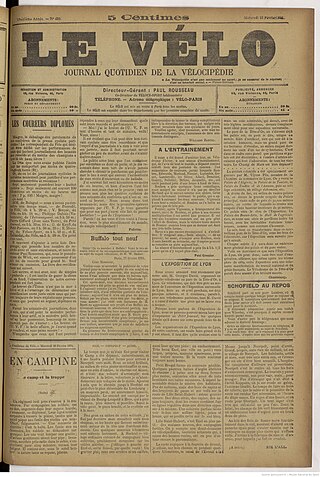
Le Vélo was the leading French sports newspaper from its inception on 1 December 1892 until it ceased publication in 1904. Mixing sports reporting with news and political comment, it achieved a circulation of 80,000 copies a day. Its use of sporting events as promotional tools led to the creation of the Paris–Roubaix cycle race in 1896, and the popularisation of the Bordeaux–Paris cycle race during the 1890s.
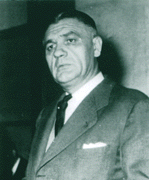
Émilien Amaury was a French publishing magnate whose company now organises the Tour de France. He worked with Philippe Pétain, head of the French government in Vichy France during the Second World War, but used his position to find paper and other materials for the French Resistance. His links with Jacques Goddet, the organiser of the Tour de France, led to a publishing empire that included the daily sports paper, L'Équipe. Amaury died after falling from his horse; his will led to six years of legal debate.

The Souvenir Jacques Goddet is an award and cash prize in the Tour de France bicycle race that began in 2001. The Souvenir is named in honour of the historically second Tour de France director and French sports journalist Jacques Goddet. It is awarded to the first rider to reach the summit of the 2,115 m (6,939 ft)-high Col du Tourmalet mountain pass in the Pyrenees, apart from 2002 Tour when the Col d'Aubisque was used and 2007 Tour where it was awarded in Port de Pailhères. A monument to Goddet was erected at the summit soon after his death in 2000. Since 2003, the cash prize is €5,000. In 2019, Thibaut Pinot became the first repeat winner of the prize.
